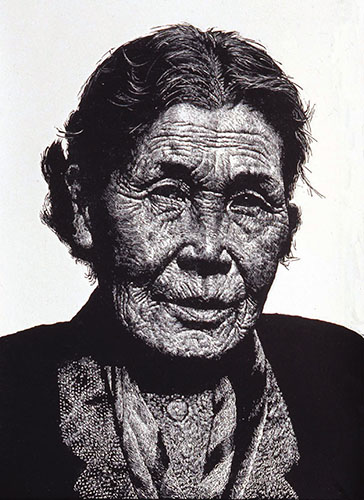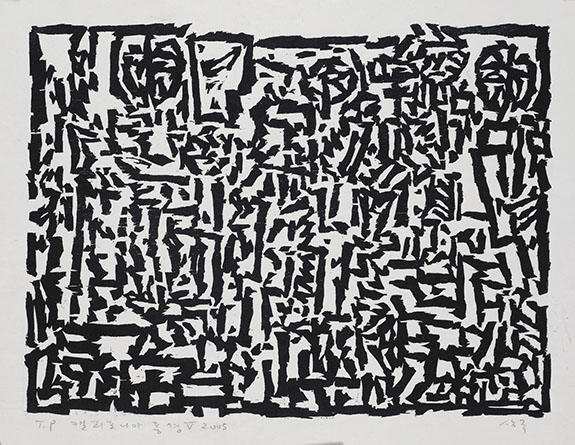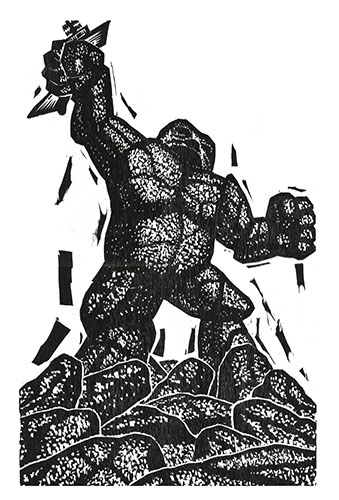 |
The Land and the People is a politically charged exhibition of contemporary Korean prints by ten artists curated by critic Kim Jin Ha and Sacramento artists Koo Kyung Sook and Ian Harvey. Mostly woodblock prints, the works draw on the deep history of the form and the recent history of the South Korean “People’s Art” movement, which, beginning in 1980, opposed the dictatorship of General Chun Doo-hwan, who ruled from 1979 1988. Movement artists used painting and especially woodblock prints to advocate for democracy and reunification and against westernization. Most of the artists in this show studied during this period. Their bold visuals and universal themes create a show that defies apparent divisions, reminding us of the shared character of all peoples and cultures.
 |
 |
appear more primitive and universal. Yoon Yeo Geul, who is also an animator, uses a brush at the end of a long pole, “like fishing,” to draw the lines for his cast-like woodcuts, giving them an airy, frenetic atmosphere amplified by the grooves incised into the paper.